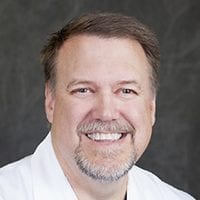When we entered the telemedicine field nine years ago to deliver TeleNocturnist hospitalist care, we knew we had a winner on our hands. What we couldn’t predict was how the field would evolve over the following decade.
We knew specialties would be hot. TeleStroke services can make the difference between a stroke patient being treated quickly and going home the next day, or spending the rest of his or her life in a nursing home.
In the ICU, recent evidence suggests that providing intensive care specialists through telemedicine (tele-intensivists) can address the 30 percent shortage of intensivists and reduce ICU mortality rates by 15-30 percent, helping hospitals meet the strict Leapfrog standards for staffing in ICUs.
TeleNephrology care is getting lots of attention, too, as a means of helping hospitals serve their communities better, but also earn the typical $10,000 in reimbursement revenue when they are able to care for a patient on dialysis (rather than transferring that patient to a distant tertiary hospital). Most hospitals have the equipment necessary for dialysis. Often, it’s gathering dust in a storage room somewhere. What they typically lack is the nephrologist to manage the treatment program. TeleNephrologists can do that…easily and cost effectively.
Solving an Immediate Problem
Then there is TeleNocturnist or TeleHospitalist care. We are pioneers in the field of telemedicine, and we never predicted it would take off the way it has today. One could call it the vanilla ice cream, or the meat and potatoes, of today’s telehealth scene. At least it is for our company. Most every hospital we know has headaches around night-time staffing. Especially in small towns, physicians are getting scarcer, and those on hand are more concerned about work-life balance than helping the hospital solve its night-shift problems.
That’s where TeleNocturnist hospitalist care comes in to save the day (and nights) by preventing burnout, improving retention and recruitment, and reducing unnecessary transfers.
Our TeleNocturnist session at NRHA in San Diego
I’ll be leading a program on TeleNocturnist hospitalist care at the National Rural Health Association’s Rural Hospital Innovation Summit to be held May 9-12 in San Diego. I’ll be highlighting how TeleNocturnist companies ease the night-shift burdens faced by rural hospitals, with five key benefits including patient satisfaction, quick access to telemedicine physicians access, cost savings, burnout reduction, and growth potential for nighttime admissions.
The program, “Night Shift: How to Build Effective TeleNocturnist Programs,” will also focus on how rural hospital executives and clinical managers can evaluate their facilities to see what type of TeleNocturnist hospitalist program is needed.
During the session, a real-world case study will be presented by Doug Romer of Grande Ronde Hospital, a 25-bed critical access hospital in rural northeast Oregon. In 2009, the facility was honored with the Outstanding Rural Health Organization Award by the NRHA—the first hospital in Oregon to achieve this recognition. The NRHA chose Grande Ronde for its exceptional contribution to rural health services through its innovative and pioneering programs that highlight the advantages of telemedicine. We are proud to say that we helped make that program possible.
An immediate solution to an immediate problem
I will also present “How to Build Consensus and Collaboration for Telemedicine” during the NRHA’s Health Equity Conference, to be held May 9 in San Diego as part of the NRHA’s Annual Rural Health Conference. The session is designed to share best practices on how facilities can work with three key constituent groups—clinical, finance and administration—to set up effective telemedicine programs that deliver significant benefits for hospitals.
The focus of that session will be implementing any telemedicine specialty, whether it is TeleStroke, Tele-ICU, TeleCardiology, TeleNephrology, or other program. All those programs are growing at Eagle Telemedicine. In fact, we have a growing number of partner hospitals who offer both TeleNocturnist hospitalist care and another telespecialty. But for an immediate solution to a challenge that grows tougher every day, telemedicine hospitalist services is what most rural hospitals ask about first—and we are here to provide the answers.
Meet Dr. Brian Hunt
Brian Hunt, M.D. is TeleHospitalist and Eagle’s TeleHospitalist Trainer. When it comes to telehealth in hospitals, it’s all about collaboration.

Dr. Brian Hunt
TeleHospitalist &
TeleHospitalist Trainer






